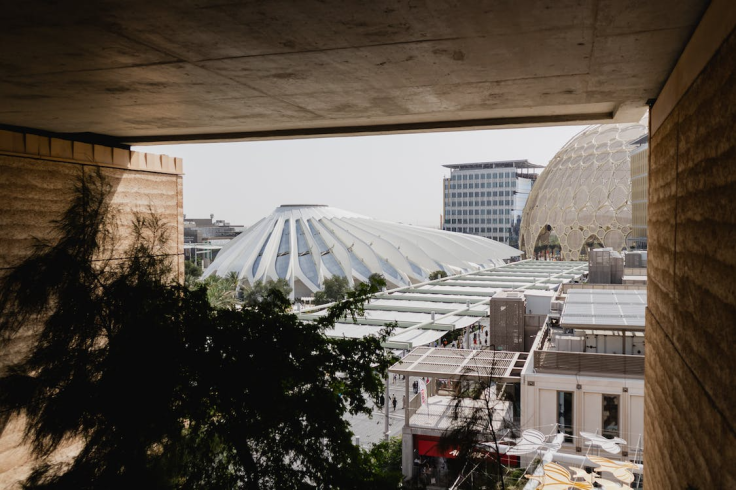UAE Pavilion At Expo 2025 To Showcase Palm Frond Forest Of Innovation

The UAE pavilion at Expo 2025 Osaka-Kansai will stand out as a striking blend of tradition and innovation. It features a forest-like structure made of 90 tall wooden columns, each 16 meters high, built using over two million palm fronds collected from across the Middle East and North Africa.
The pavilion, titled "Earth to Ether," reflects Emirati values of generosity and resilience through its use of palm fronds—a cultural symbol in the UAE. The design combines traditional Emirati craftsmanship with advanced Japanese carpentry to highlight sustainability and human creativity, WAM reported.
Pavilion Highlights Sustainability with Recycled Date Pits and Local Materials
The UAE pavilion at Expo 2025 features facades decorated with recycled date pits, using about two tonnes of this natural material. This creative approach blends authenticity, sustainability, and unique design, showcasing the palm tree not only as a cultural symbol but also as a renewable building material.
The design tells the story of a nation honoring its heritage while embracing the future. Shaikha Al Ketbi, Creative Director and Deputy Commissioner General of the Pavilion, explained that the design focuses on reusing natural materials from the local environment.
One key innovation is "Datecrete"—an eco-friendly flooring material made from ground date pits, offering a sustainable alternative to cement and representing a homegrown Emirati invention.
The UAE pavilion at Expo 2025 also features a material called "Date Form," created from palm and date waste, which was used in several parts of the pavilion's design.
Global Collaboration Shapes Pavilion Celebrating Cultural Harmony and Innovative Design
Shaikha Al Ketbi shared that the pavilion was developed through a collaboration between Emirati, Japanese, and international companies under the "Earth to Ether" group. This team brought together experts in architecture, engineering, technology, carpentry, and design, led by the Expo UAE Team.
Key creative partners included the Italian company Raymond, Atelier Brückner, Ro'ya, and the global studio SLA. The pavilion's natural spaces are designed to represent cultural harmony.
Inspired by Japan's "Satoyama" forests, oak and red pine trees decorate the facade, symbolizing the balance between people and nature. Visitors can relax under a Pergola roof made from Japanese cedar wood, which features traditional Emirati "Khoos" weaving patterns for shade.
© Copyright 2023 IBTimes AE. All rights reserved.


















